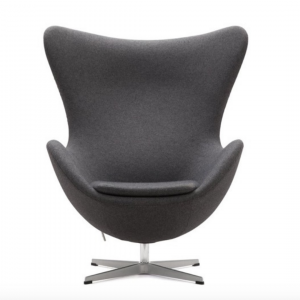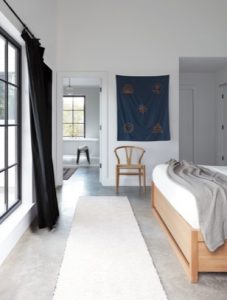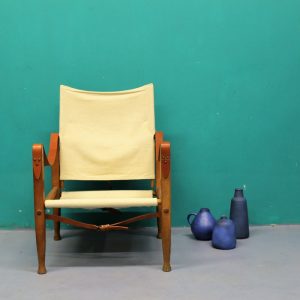February 19, 2021
Scandinavian chairs are some of the most recognizable interior design pieces of the style. There are so many inspirational and unforgettable Scandinavian designers. Many of their iconic pieces have lived on in interior design work over the decades. Most of us know what an “Egg Chair” is without having an understanding of the icon designer who created it. Here is a look at some Scandinavian furniture designers who have inspired my interior design work over the years. Click on the images to shop the Scandinavian Chair designs below.
The Scandinavian Designers behind the most iconic Scandinavian Furniture and Accents
Hans Wegner
A cobbler’s son, Wegner was born in 1914 in Tønder, a town of southern Denmark. Among Danish furniture designers, Hans J. Wegner (1914-2007) is considered one of the most creative, innovative, and prolific designers. He created over 500 iconic furniture pieces and was commonly referred to as the master of the chair. Some of his most iconic designs are the peacock chair, the shell chair, and probably the most well-known, the wishbone chair, which has been in continuous production since 1950.
Best-Known Design: The Wishbone Chair


Kaare Klint
Known as the father of modern Danish furniture design, he designed his first piece of furniture at the age of 26. As the son of an architect, he was steeped in the danish design process at a young age but made his real mark as a furniture designer and teacher. He was an important part of developing the school of Furniture Design at The Royal Danish Academy of Fine Arts in the early 1920s. As a professor, he influenced some of the most prominent Danish architects and designers including Hans J. Wegner, Arne Jacobson, and Nanna Ditzel to name a few. They would go on to engage in the most prolific time of iconic furniture design that is now referenced as the Golden Age of Danish Design.
Best-Known Design: The Safari Chair
Arne Jacobsen
Although Arne Jacobsen was a prolific Scandinavian modernist furniture designer he viewed himself first and foremost as an architect. As a matter of fact, he did not like being referenced as a designer. He was best known for his great sense of proportion and was the architect on such large commissions as the SAS Royal Hotel and St Catherine’s College. Even though he was a brilliant architect he would go on to produce millions of his plywood Ant Chair and found his inspiration for the bentwood in Charles and Ray Eames’ designs. The Egg Chair was one of his most iconic designs and has stood the test of time. It is still an important chair style and found in many modern interiors today.
Best-Known design: The Egg Chair


Finn Juhl
Initially, Finn Juhl wanted to be an Art historian but with encouragement from his father, he enrolled in the Royal Danish Academy of Fine Arts where he studied under Kay Fisker from 1930-1934. The debut of his first designs was met with great criticism and his pelican chair was referred to as ” a tired walrus”. In spite of all this, his work began to influence the modern movement and he made his American debut at the MoMA in New York in 1951. The iconic sensual shapes of his designs have earned him many awards. His designs have lived on as well as his very popular Chiefaints Chair.
Best-Known design: The Chieftains Chair

Børge Mogensen
Mogenson began his design career as a cabinet maker and assistant teacher for Kaare Klint before adventuring out on his own in the late 1950s. He was famous for his craftsmanship and won multiple design awards. His designs bring in the warm Scandinavian feel with the light woods and cozy camel leathers.
Best-Known Designs: The Spanish Chair


Jens Risom
Born in Copenhagen in 1916, he studied at the Royal Danish Academy of Fine Arts in the 1930s with Kaare Klint as his teacher and Hans Wegner as a classmate. He collaborated with and was commissioned by Hans Knoll to create the inaugural Knoll catalog, including 15 Risom-designed pieces.
Best Known Design: The Risom Lounge Chair

Nanna Ditzel
Nanna Ditzel (nee Hauberg) was an iconic danish modern furniture designer born in Copenhagen in 1923. She received her education at the Danish Academy of arts and crafts and the Danish Royal Academy of fine arts in Copenhagen. It is here where she met and married her fellow student Jorgen Ditzel. Together they became a significant influence in Danish design and won numerous awards during the 15 years together, before his untimely death in 1961. Their unique furniture pieces designed in natural fibers such as rattan and wood have a free-form styling that sets them apart from the Kaare Klint school of thought, whom they both studied under in Copenhagen. Ditzel was nicknamed the “First Lady of Danish Furniture Design” by the Scandinavian Furniture Fair.
Best known for: The Madame chair, Trinidad chair, children’s high chair, and perhaps the best known The hanging chair, nicknamed, hanging egg chair.

According to the 2016 World Happiness Report, Denmark ranks as the world’s happiest country, and that the positive statistic can be attributed to Hygge. (pronounced Hueguh).
Wikipedia describes it as a Danish and Norwegian word for “a mood of coziness” and “comfortable conviviality with wellness and contentment feelings.” Translated, it means cozy throws, minimalist fireplaces, fuzzy slippers, relaxation and ease. Also think of warm light-colored woods, strong contrasts, nubby fabrics and soft colors. Bringing in Hygge to your space is about arranging seating areas to promote comfort and coziness and support the feeling of togetherness. Clean white lines softened with warmer textures and light colors. Natural light, indoor plants and organic, textured fabrics add to the coziness of this styling.
Want a deeper understanding of Scandinavian interior design? Read all about this interior design style here. Do you have a favorite Scandinavian designer? Let us know in the comments.
Vikki Werbalowsky
Iconic Scandinavian Chairs and The Designers Behind Them

Leave a Reply Cancel reply
About
Blog
Portfolio
hello@labellavie.com
Copyright © 2020 La Bella Vie | All Rights Reserved
Contact
Join Our Newsletter










[…] Click here to read more on well-known Scandinavian designers […]
[…] Looking to learn more about the Iconic Designers behind the Scandinavian design movement? Click here! […]